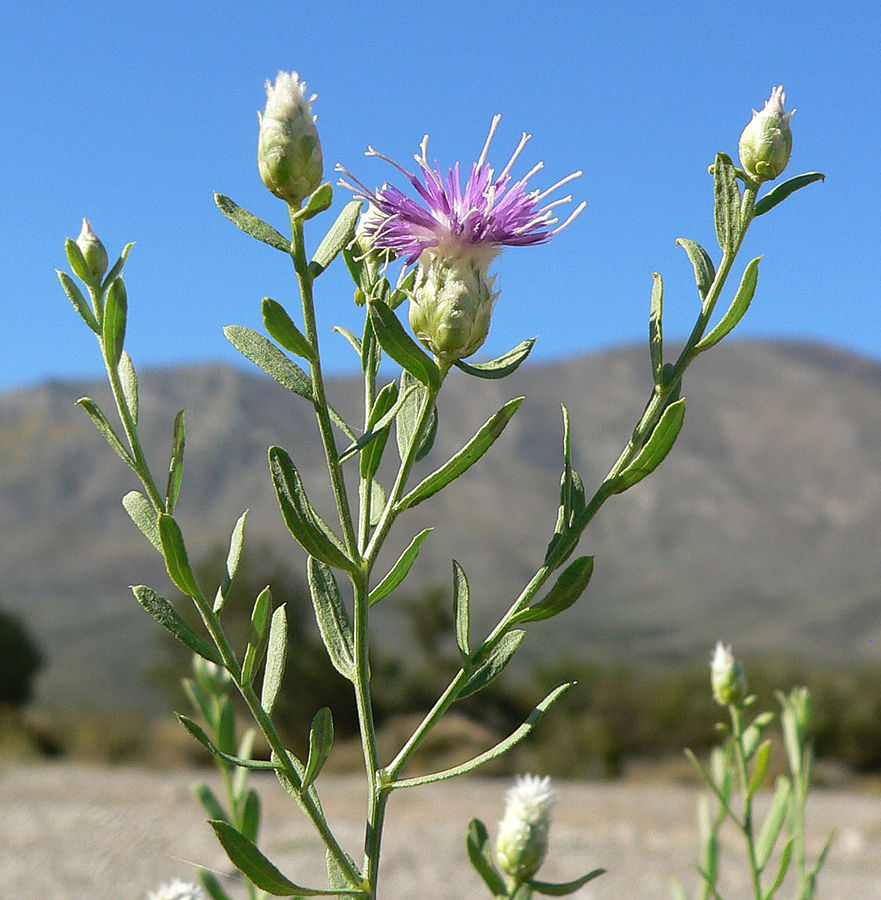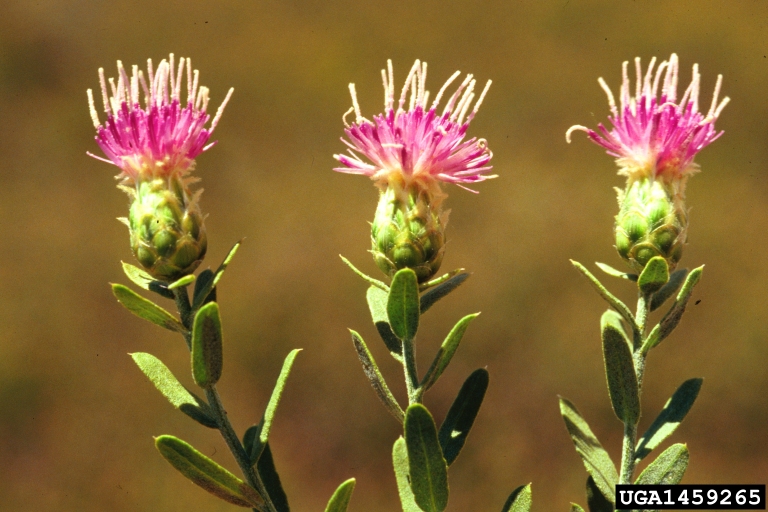Russian Knapweed

Russian Knapweed
(Acroptilon repens)
Priority: - Prevent / EDRR
Tags: Toxic | Biocontrol
Identification and Reproduction
Identificaion:
- Russian knapweed is a bushy perennial in the Asteraceae family.
- This plant ranges from 0.5-1 m tall.
- Stems grow upright and are widely branched. Young immature stems are covered in grey hairs.
- Leaves are arranged in an alternate pattern and are oblong to lance shaped. Leaves that are on the lower part of the stem are lobed.
- They produce small flowers that are either pink or purple. The bracts under the flower heads are green to straw coloured. Blooms occur from June through September.
- If ever given the chance to dig up the roots, they are black or dark brown.
Reproduction:
- Reproduce vegetatively through creeping black rhizomes.
- Any root fragment will regenerate and produce a new colony.
- A single Russian knapweed plant can also produce 1,200 seeds per year.
- It is common for Russian knapweed to hitching a ride on hay bales and spread to new sites.
Habitat & Ecology
- This plant is commonly found in pastures, hay fields, grain fields, irrigation ditches and roadsides.
- It is well adapted to a variety of soil types but relatively shade intolerant.
- Is not necessarily regarded as a pioneer species, but once established it becomes very aggressive, spreading far and forming monocultures.
Impacts
Social:
- Reduces forage opportunities for likestock.
- It is also toxic to horses, causing a neurological "chewing disease".
Ecological:
- Reduces biodiversity for native plants and wildlife.
- Russian knapweed contains allelopathic properties that inhibit the growth of native species.
Management
Mechanical/Manual Control:
- Prior to seed production, cutting or mowing to the ground level will be effective.
- Mowing in intervals over the growing season, about every 2-3 weeks prior to seed set, will suppress infestation growth.
- If repeated several seasons root reserves will be exhausted.
- For small patches hand pulling or digging may be effective. It is best done when soil is moist in the spring. When using this technique be sure to try and remove as much as the root mass as possible.
Biological Control:
- The Russian knapweed gall nematode forms galls on the stems, leaves and root crowns.
- There is also research on a rust fungus that attacks the root system.
Chemical Control:
- Currently 2,4-D, aminopyralide, dicamba, MCPA and picloram are registered for use on this knapweed.
- It should be noted that Picloram is considered to be the most effective. Apply in the late fall after frost.
- After herbicide application consider seeding or planting the area with native species and applying fertilizer to facilitate competition.
- Please carefully read herbicide labels prior to application.
Resources
Download the Saskatchewan Invasive Species Council's factsheet on Russian Knapweed here.
For more information on control measures check out the United States Department of Agriculture's Field Guide for Managing Russian Knapweed in the Southwest. Note this is a US resource, Canadian guidelines and regulations differ. Be sure to carefully read product lablels prior to application.
Header photo (Thayne Tuason).




